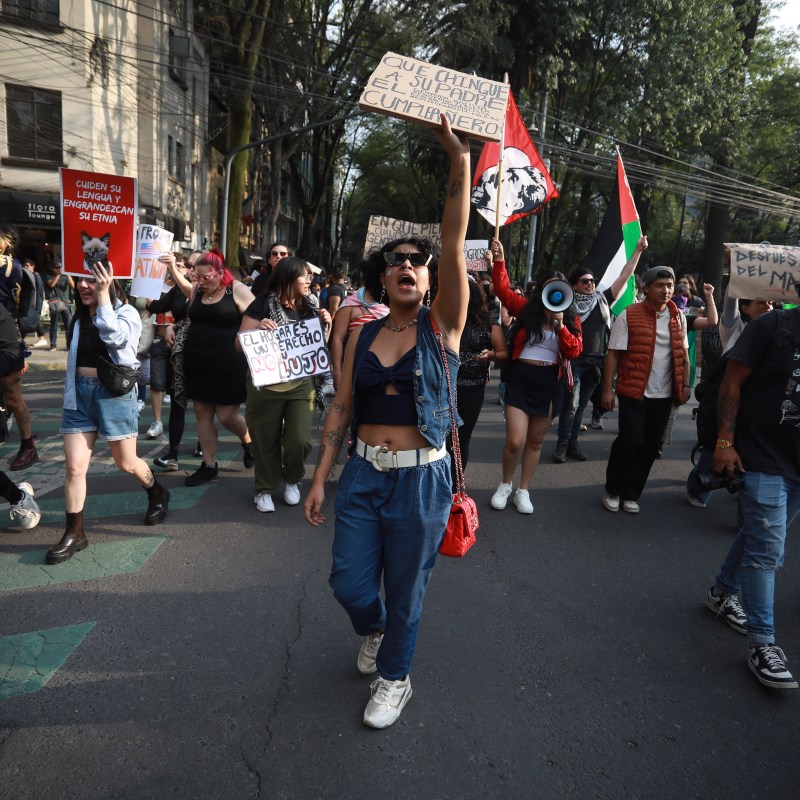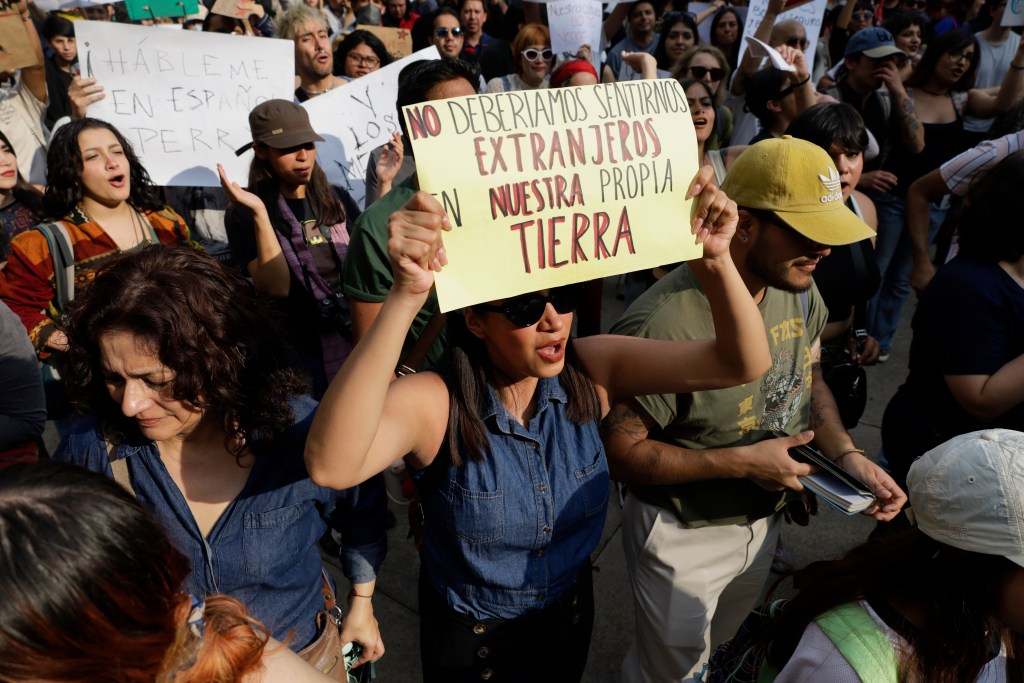
It’s been one week since the July 4 protests against mass tourism and digital nomads took off in Mexico City.
Videos by TravelAwaits
Hundreds of locals marched across the city to demonstrate being fed up with rising housing prices, an overwhelming number of tourists, a growing wave of digital nomads, and gentrification. While the majority of protests remained peaceful, there were reports of vandalism and even run-ins between protestors and tourists.
Mexican President Claudia Sheinbaum was quick to critique the protests, calling them xenophobic. Meanwhile, others level the blame at Mexico City’s changing identity on Sheinbaum and other government employees.
But what’s really going on? Are these like the protests kicking off in Southern Europe?
After all, though they overlap, issues like housing crises, remote workers, and mass tourism are pretty distinct. Plus, there’s all that tension between the US and Mexico, which I think is also influencing the protests and general sentiment in CDMX.
The big question is—should Americans still travel to Mexico City? And, if so, how should you plan your trip to avoid any run-ins?
First—why are locals protesting in Mexico City?

The conditions that inspired Mexico City residents to protest are intertwined and yet distinct—but they aren’t unique. I’m someone who straddles many of these lines in my day-to-day life in Barcelona.
I live in a city that’s being deeply influenced by mass tourism, including issues like skyrocketing housing costs. Plus, I’m a remote worker who often gets the blame for issues like gentrification. I’m also an immigrant who is fully integrated into Spain’s social and legal systems.
That doesn’t mean I understand fully what’s happening in Mexico City. After all, Mexico City and Barcelona are very different cities. I’m also not a local.
However, here’s my take on these issues:
- Mass tourism: Mass tourism puts a strain on residents in dozens of ways, from added pollution from non-stop flights to seeing entire neighborhoods change to cater to visitors. From dirty air to seeing those beloved shops close up, it changes a local’s home and how they can interact with it. In short, it’ll make you feel displaced on your own stomping grounds.
- Digital nomads vs. remote workers: Digital nomads and remote workers are often clumped under the same group, but they’re different. A digital nomad is someone who works remotely while also traveling full-time. A remote worker, by contrast, is someone who doesn’t have to go to an office or shop to clock in. I’m a remote worker who is a freelance writer; I am not a digital nomad because I live full-time at my home in Barcelona.
- Gentrification: Gentrification is when higher-income groups move into a neighborhood that was once lower-income. They often displace lower-income residents by pricing them out in terms of housing, restaurants, grocery stores, etc. Mass tourism and gentrification often go hand-in-hand; many neighborhoods in cities like Mexico City are gentrified to cater to tourists and digital nomads.
- Housing crises: One of the most immediate and impactful ways that mass tourism and gentrification negatively affect residents is by driving up property value and, in turn, rental and sale prices.
- US political climate: Regardless of where you stand when it comes to US-Mexico politics, it’s a tense time for citizens in both countries. These types of political tensions can easily bleed over into public sentiment.
Should Americans still plan trips to Mexico City?
Here’s the big catch about those protests happening in Mexico City: President Claudia Sheinbaum was one of the major proponents of creating campaigns and policies to attract digital nomads to Mexico City post-COVID. In fact, her push for boosted visitors included a campaign that brought on Airbnb and UNESCO.
And Americans heeded the call. They flocked to the city by the thousands—a trend that hasn’t let up since 2021. (And doesn’t look like it will anytime soon.)
If you’re an American who wants to visit Mexico City, I’d like to make it clear that the protests are complex and, to a very large extent, the responsibility of local authorities to manage.
The situation feels reminiscent of what’s going on in Barcelona right now, where Mayor Jaume Collboni has launched a campaign to get rid of illegal Airbnbs around the province… while also signing off on plans to expand the airport and boost tourist numbers.
It’s a layered game of riff-raff, and while travelers, tourists, and residents are facing tense and even frightening run-ins, I place the major onus of responsibility on those in charge of hospitality-facing policies. I also think it’s worthwhile to follow the money to ask… who really benefits from mass tourism?
I think you should still plan that trip to Mexico City. And I think now is the perfect time to learn the basics of ethical travel so that you can fly in knowing that your stay will benefit you, locals, and the city.
How can you plan an ethical trip to Mexico City?

I’ve outlined the issues behind the recent protests in Mexico City, which can help travelers figure out how to visit the city ethically. In the image above, the protester is holding a sign that says, ‘We shouldn’t feel like foreigners in our own home.’
That’s a great guiding principle for ethical travel. When you show up, you should try to do as locals do. For example, skip the Starbucks and head for a Mexican-owned cafe instead.
Let’s dig in a bit more with these suggestions:
- In terms of lodging: Look for mom-and-pop and small business establishments. Remember: you want your money going directly into locals’ hands. Usually, hotels, B&Bs, or boutiques are the way to go, but I’m sure you could also find rentals that are managed by families or small businesses. Try to stay as long as possible, too—a week-long trip is way better for the local economy than weekend getaways.
- In terms of neighborhoods: Protests on July 4 were focused on neighborhoods like Condesa, Roma, and Juarez. You might notice added tension if you stay in them. A good alternative could be El Centro.
- In terms of where you go: Get off the beaten path! Mexico City is massive, meaning you can find cultural establishments and amazing museums all over the place, from urban garden projects to World Fair Moorish-style gazebos.
- One last tip: Use your Spanish. Seriously, go out of your way to use any Spanish you can. While it’s always good practice, these are the times when using the local language matters the most.
